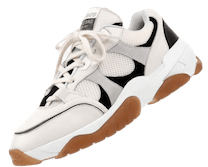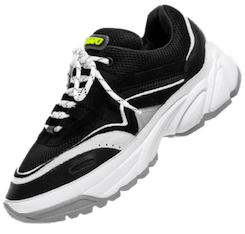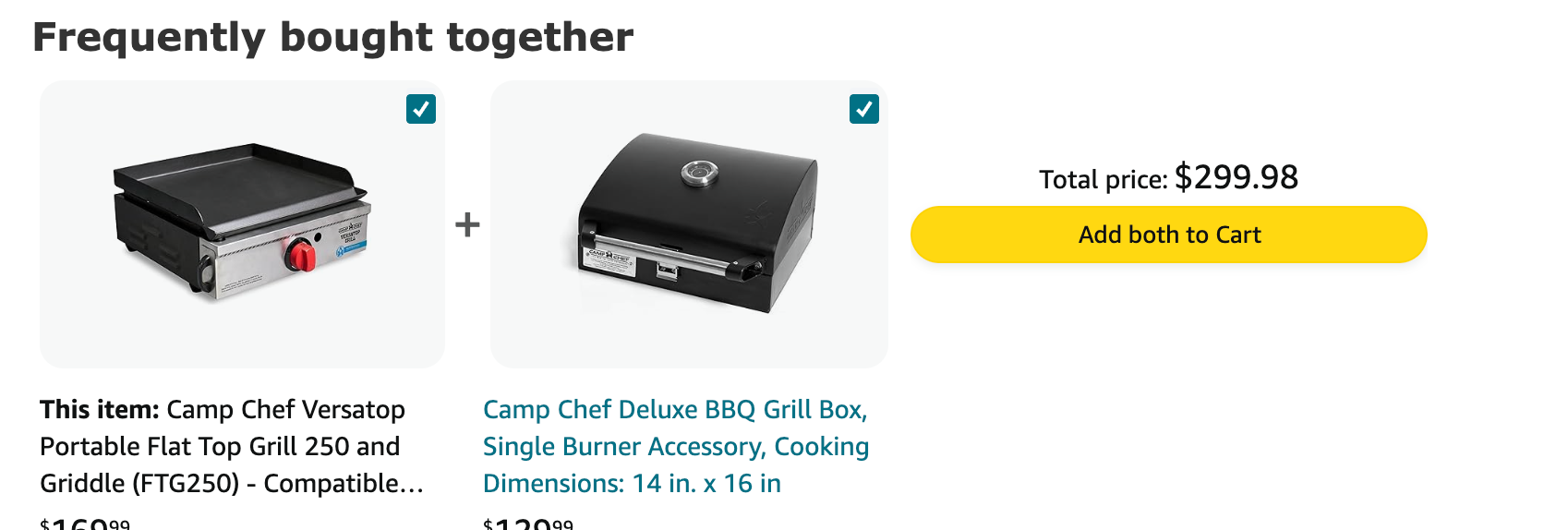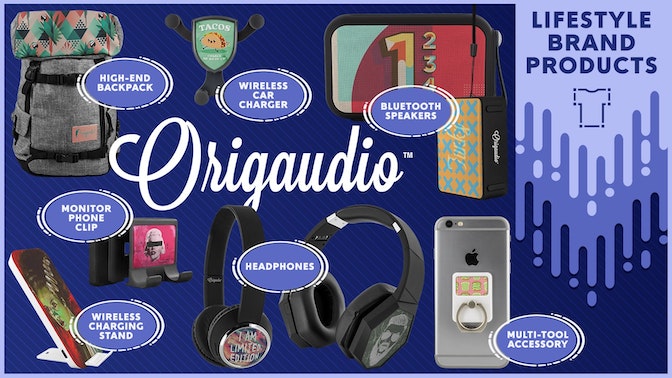It’s an ecommerce entrepreneur’s dream to open a new online business that takes off immediately, with items flying off the proverbial shelves faster than you can keep up with. There’s just one dilemma: how can you make sure you find a product that has this kind of potential?
When you’re choosing a new product to sell, there’s always a delicate balance to weigh out. Should you go for a hot, trending item, or one that’s evergreen? Should you go for a product that’s super popular in the general market, or one that’s more niche and unique? Will you manufacture it yourself, or choose a different route like private label or dropshipping?
There’s a lot to consider during the product research phase. That’s why we’ve put together a list of some of the top strategies to help you choose a profitable product and reach the level of success you’ve been dreaming about.



13 tips to find a product
1. Address a pain point
A classic piece of advice for any new business owner. Frankly, nobody is going to buy your product if it doesn’t solve a need or pain point of theirs. With this in mind, it can be helpful to start with this instead of starting for a product.
Pay attention to the things people are saying in your personal circles and online, whether they have complaints about existing solutions that are on the market now, or things that don’t have any good solutions yet.
→ Click Here to Launch Your Online Business with Shopify
Common types of pain points with existing products and services (as well as personal pain points for individuals) include financial, productivity, process, and support.

2. Connect with hobbyists
Have you ever met a hobbyist? (Or maybe you are one yourself.) This can be a great market path to take. Hobbyists are so passionate about their hobbies that they’re often willing to invest however much it takes for them to pursue that hobby.
If you can manufacture, private label, or dropship one of these types of products, and it provides real, tangible value to this enthusiastic audience, you’ll likely have a much easier time selling your product than if you were building a market from scratch.
3. Follow your own passion
Do you have a hobby or passion pursuit? This can be a big leg up—it essentially means you’re a member of your own target audience. You can significantly speed up your market research process when you’ve got valuable input to start with.
This can also be helpful as you navigate the market and decide which features, marketing channels, and distribution methods might work best for the product. You can provide insights into things like tailored ads based on needs and preferences, and be a benchmark for audience engagement.
4. Use your professional expertise
Similarly to the personal passion route, you’ll likely benefit if you can tap into your own professional experience. Have you ever worked in a certain industry or area where you learned some valuable intel?
Take for example Dustin Lee. He founded Retro Supply, a website that sells digital assets for illustrators and designers. He has his own insights into what can help designers because he is one, and he chose to open his store instead of continuing to run his service-based design business.

5. Find and jump on trends
A lot of entrepreneurs have found success by sniffing out new trends as early as possible, and jumping on them with full force. This obviously comes with its own considerations and risks. For example, because of the nature of a trend, it’s likely that this type of business has a short shelf-life as people move on to the next new thing. This is especially true if you pursue a “fad,” which you can think of as a more short-lived trend.
To pick up on trends, tap into online research. You can do things like social listening and looking at trending topics and hashtags on social media. You can also check Google Trends, use Trend Hunter, and sift through other sites like Reddit.
6. Check the reviews
Customer reviews on existing products can be an excellent source of intel. Pay special attention to complaints and critiques: these will tell you where those products fall short. Then you can swoop in with new services or products that fill those gaps.
You’ll also be able to gauge audience engagement for certain products and niches to see which ones bring the most community involvement. This could point to communities where people are more passionate about the products they buy.
7. Scour product keywords
You’ve certainly heard about keyword research. That’s because it’s an incredible way to tap into what customers want and need, and what they’re talking about right now.
You can start with suggested keywords on Google, as well as using specialized product search and keyword research tools like Keywords Everywhere, Jungle Scout, and Helium 10. You can also look at online marketplaces like Amazon.

8. Validate your idea first
Jumping in head-first has its pros and cons. The biggest con: If it’s a bad idea to begin with, you’ve spent a whole lot of resources to come to that harsh realization. That’s why it can be helpful to validate your idea before you go full speed.
One way to validate your idea is to set up a landing page showcasing your product in detail, with an option to sign up for updates or even pre-purchase it. Another way is to create a crowdsourcing campaign on a site like Kickstarter, GoFundMe, or SeedInvest. If you get early traction, you’ll know the idea has potential. If not, you can pivot to something else.
9. Consider related products
Interested in a certain product or industry? Dig deeper with related products on Amazon. Here’s how they can spark your next big idea:
- Related products often brought together: This shows complementary products. If customers buy a grill, and they’re also purchasing grill covers, there’s a hint! Maybe there’s room for innovative grill accessories in the market?
- Other items consumers frequently buy: It uncovers buying trends. If someone gets a yoga mat and later a meditation cushion, it could point to a growing interest in holistic wellness products.
- Items Amazon suggests as similar: This highlights alternatives and variations. Found an eco-friendly water bottle? What other sustainable products are being recommended? Is there a niche within sustainability you haven’t explored?
- Related sponsored products: These are bets companies are placing. If multiple brands are promoting wireless earbuds, there might be a demand. Could you introduce unique features or designs to stand out?

10. Research items with minimal overheads
Products with minimal overheads can be gold mines. They pave the way for significant profits since their production costs are generally on the lower side. But when setting your price, remember it’s not only about the initial expenses.
Your cost of goods sold (COGS) paints the whole picture. It encompasses everything, from the production of the product to its promotion, storage, and even shipping. The aim? Identify those cost-effective items with the potential for a high return on investment (ROI).
Some pointers: Items that weigh less often cost less to ship. Also, low wholesale prices don’t automatically guarantee a stellar ROI. To simplify the pricing calculations, turn to tools like the Shopify margin calculator.
11. Harness personal sentiments for ideas
One largely unexplored method of product discovery is taking inspiration from personal histories. Ask friends, family, or even community members about items they once loved but can no longer find, or items that their ancestors used that they wish they had access to today.
Here’s a simple way to go about it:
- Host a “memory share” evening: Organize a gathering (virtual or in-person) where attendees bring or discuss a past product they miss or wish they could have in a modern context.
- Document and analyze: Make notes of recurring themes or particularly captivating stories. Products that evoke strong emotional reactions or fill a genuine gap can be ripe for reintroduction or reinvention.
- Prototype and test: Based on feedback, create a prototype or an MVP (minimum viable product). Share it with those who provided the initial idea to get feedback.
This approach can help identify products that already have an emotional connection with potential customers and might offer unique value in today’s market.
12. Go through tutorials to discover unmet needs
People often make things themselves when they can’t find them in stores. And they often make tutorials on them. Just take a peek at YouTube or DIY blogs, and you’ll see they’re overflowing with these kinds of insights.
Consider this: You stumble upon a rising number of homemade standing desk tutorials. It’s a hint right there—a need for budget-friendly or varied desk options. Or, let’s say there’s a flood of guides to fix a specific gadget. It’s a loud and clear call for a sturdier or more intuitive version.
But don’t just watch the videos. Go through the comments. That’s where viewers spill their wishes, often pointing out product flaws or features they wish existed. Spotting these gaps? That’s your golden ticket.
13. Get fresh ideas through cultural conversations
Online platforms open doors to cultures worldwide. Go deep into these spaces, and you can uncover profitable products waiting for broader markets.
Start by joining platforms that foster international ties. Engage in chats about daily routines or cherished traditions. Often, what’s common in one culture stands out in another. It could be a handcrafted item, a special tea blend, or a unique decoration.
Sites like InterPals and ConversationExchange are great starting points. Yes, people use them to learn languages, but they also share snippets of their daily lives. Pay attention to unique items they mention or use.
Now it’s up to you
We’ve discussed some great starting points to help you on your product research journey. All that’s left is to dig in and find a product that checks off a solid number of the boxes you’re looking for.
As you search, keep in mind the type of balance you’d like to strike. Consider how much you’re willing to invest upfront on testing your idea, as well as how much you can spend on marketing strategies like tailored ads and personalized content.
When you consider the whole 360-degree view, you’re in a much better place to hit the ground running and keep the momentum going for the long haul.






